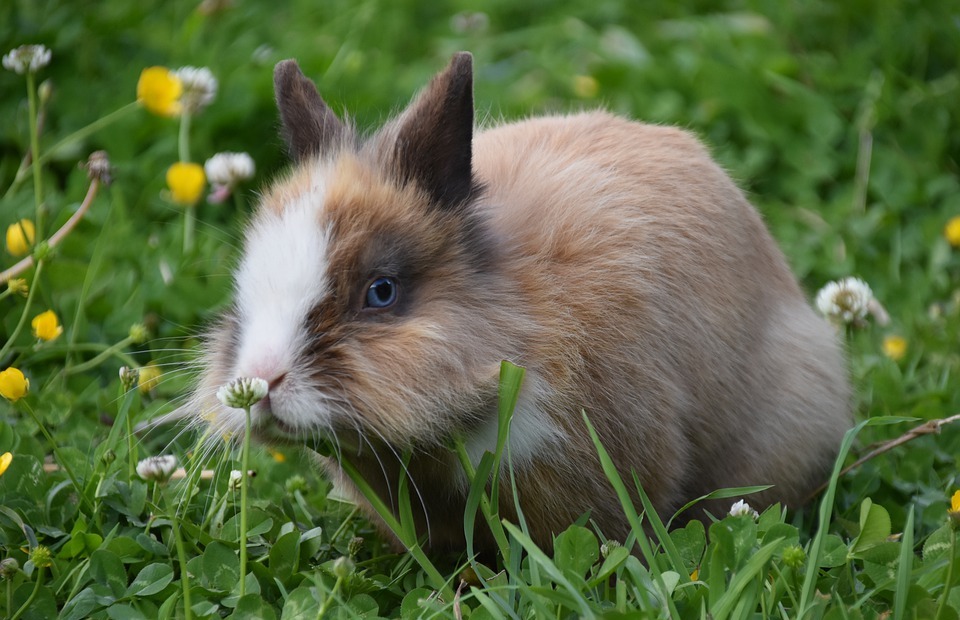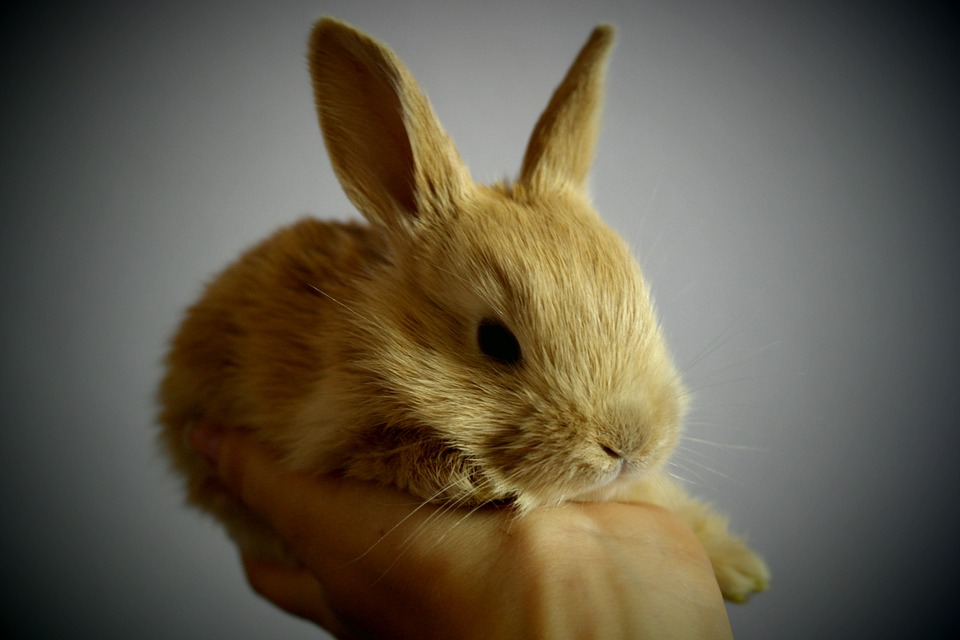The terms "rabbit" and "bunny" are frequently used interchangeably, leading to confusion about whether they refer to the same animal. While they might seem like synonyms, there are distinct differences between these adorable creatures that set them apart. This article delves into the world of rabbits and bunnies, exploring their biological similarities, behavioural distinctions, and the linguistic nuances that surround these beloved animals.
Part 1: The Science Behind the Furry Friends

1.1. Scientific Classification: One Family, Many Names
Both rabbits and bunnies belong to the same species, Oryctolagus cuniculus, classified as mammals within the family Leporidae. This family also includes hares, which share a common ancestry with rabbits and bunnies. However, rabbits and bunnies are distinguished from hares by their smaller size, shorter ears, and tendency to live in burrows.
1.2. Anatomical Similarities: A Tale of Two Tails
Rabbits and bunnies share several anatomical features, making it difficult to tell them apart based on physical attributes alone. They possess:
- Long, soft fur: This fur provides insulation and camouflage, vital for survival in their natural environments.
- Large, protruding ears: These ears act as sensitive hearing organs, allowing them to detect predators and communicate with each other.
- Short, powerful hind legs: These legs enable rabbits and bunnies to hop with incredible speed and agility, allowing them to escape danger quickly.
- Small, rounded body: Their compact body shape aids in agility and maneuvering through burrows and dense vegetation.
- A small, blunt nose: This nose houses a keen sense of smell, crucial for foraging and social interaction.
1.3. Reproductive Cycle: A Tale of Fast Growth
Rabbits and bunnies share a remarkably similar reproductive cycle, known for its rapid pace. They are considered prolific breeders, with females capable of producing multiple litters per year. Gestation periods are short, typically lasting around 30 days, and young rabbits, called kits, are born altricial, meaning they are born blind and hairless and rely heavily on their mother for care.
Part 2: Beyond Biology: Unveiling Behavioural Differences

2.1. Size and Weight: More Than Just a Matter of Scale
While both rabbits and bunnies are generally small creatures, there is a subtle difference in their average size. Rabbits tend to be larger and heavier than bunnies, with adult rabbits typically weighing between 2 and 6 kg, while bunnies may weigh less than 2 kg. This size difference is often attributed to breeding and domestication, with some rabbit breeds being specifically bred for larger sizes.
2.2. Temperament and Personality: A Spectrum of Feline Friends
Although individual personalities can vary greatly, rabbits are generally known for being more independent and less cuddly than bunnies. This perceived difference in temperament stems from their natural behaviours and domestication history. Rabbits, being wild animals, are more cautious and wary of humans, while bunnies, often bred for companionship, are more likely to be socialised and accustomed to human interaction.
2.3. Social Behaviour: Bunnies, Burrowers, and Bonding
Rabbits are highly social creatures, living in complex hierarchies within their burrows. They communicate through a variety of vocalizations, scent markings, and body language, establishing dominance and maintaining social order within their groups. Bunnies, although capable of forming strong bonds, are less likely to live in large groups and may prefer individual companionship.
Part 3: Linguistic Nuances: A Word for Every Hoppy Friend
3.1. The Origin of "Bunny": A Tale of Playfulness and Cuteness
The term "bunny" is believed to have originated as a playful, informal term for a rabbit. It's likely that the term arose from the sound of a rabbit's nose twitching, which is often described as a "bunny-like" sound. This endearing term quickly caught on and has been used in children's literature and popular culture for centuries.
3.2. Usage and Context: Formal vs. Familiar
In modern English, "bunny" is typically used as a more casual and endearing term for a rabbit, often used for baby rabbits or by children. It's a term that evokes a sense of playful affection and innocence. "Rabbit," on the other hand, is a more formal term, commonly used in scientific or technical contexts, as well as in discussions about the animal's biological characteristics.
3.3. Regional Variations: From Country to Country
There may be regional differences in the usage of "rabbit" and "bunny". In some parts of the world, "bunny" may be used as the primary term for the animal, while in other regions, "rabbit" remains the preferred term. This regional variation is often influenced by cultural norms, local dialects, and the prevalence of domesticated rabbits in a particular area.
Part 4: The Importance of Terminology: Choosing the Right Words
4.1. Accuracy in Communication: Avoiding Misunderstandings
Using precise language is crucial in any field, especially when discussing scientific or biological concepts. When discussing rabbits, using the correct terminology can help to avoid confusion and ensure clarity in communication, especially when discussing specific breeds, behaviours, or scientific research.
4.2. Respect for the Animal: Beyond the Pet Name
Using the term "bunny" as a general term for rabbits can sometimes be seen as disrespectful to the animal, particularly in scientific or professional settings. "Rabbit" is considered a more formal and respectful term, reflecting the animal's true nature and biological classification.
4.3. Cultural Context: Words and Meanings
The use of "bunny" or "rabbit" can also be influenced by cultural context. In some cultures, these terms may hold specific meanings or connotations. It's important to be sensitive to these cultural nuances and use language accordingly, especially when communicating with people from diverse backgrounds.
Part 5: The Importance of Understanding: Moving Beyond Terminology
5.1. Beyond Names: Observing the Behaviour
The most accurate way to understand the true differences between rabbits and bunnies lies in observing their behaviour and individual personalities. While "rabbit" and "bunny" might be used to denote different levels of formality, they ultimately refer to the same species.
5.2. Choosing Your Pet: The Right Companion for You
When choosing a rabbit as a pet, it's essential to research different breeds and consider their individual temperament and needs. Some breeds are more social and playful, while others are more independent and require more space.
5.3. Responsible Pet Ownership: Understanding Their Needs
Regardless of whether you call them a rabbit or a bunny, it's essential to understand their needs and provide them with proper care. Rabbits require a spacious, enriched environment, a balanced diet, regular veterinary checkups, and plenty of social interaction.
Part 6: Conclusion: Embracing the Beauty of Variety
In conclusion, while both rabbits and bunnies belong to the same species, there are subtle distinctions between these furry creatures. While "bunny" is often used as a more informal and endearing term for a rabbit, "rabbit" is considered a more formal and accurate term. Ultimately, understanding these nuances can enhance communication and foster greater respect for these fascinating creatures.
FAQs
1. Can I call a rabbit a bunny?
While you can call a rabbit a bunny, it's generally considered more appropriate to use the term "rabbit" when discussing them in a formal setting, such as scientific papers, veterinary discussions, or when talking to rabbit breeders or experts. However, the term "bunny" is perfectly acceptable in casual conversation or when referring to baby rabbits.
2. Is there a scientific difference between rabbits and bunnies?
No, both rabbits and bunnies belong to the same species: Oryctolagus cuniculus. The terms are primarily used to differentiate between formal and informal language.
3. Which term is preferred by rabbit owners?
While personal preferences vary, many rabbit owners prefer the term "rabbit" as it reflects the animal's true nature and species classification. However, some owners may use the term "bunny" as a term of endearment.
4. Is it okay to use "bunny" when talking to children?
Yes, "bunny" is often used as a more playful and endearing term for rabbits when talking to children. It's a familiar and approachable term that helps children connect with these adorable animals.
5. Is there a specific age when a rabbit becomes a "rabbit" instead of a "bunny"?
There is no definitive age at which a rabbit transitions from being a "bunny" to a "rabbit". The terms are primarily used to denote different levels of formality. A baby rabbit, regardless of age, can be called a "bunny," while an adult rabbit can be referred to as a "rabbit" in more formal contexts.
6. What is the best way to tell if a rabbit is a rabbit or a bunny?
The term "rabbit" and "bunny" are primarily used to reflect different levels of formality. There is no way to visually or biologically differentiate between a "rabbit" and a "bunny."
7. Are there any breeds of rabbits that are called "bunnies"?
No, there are no specific breeds of rabbits that are officially classified as "bunnies." The term "bunny" is simply a more informal way of referring to rabbits.
8. Should I use "rabbit" or "bunny" when writing a research paper about rabbits?
In scientific and research settings, "rabbit" is the preferred term as it is a more formal and precise term that avoids ambiguity. This ensures clarity and avoids potential confusion, especially when discussing specific breeds, behaviours, or scientific research.
9. How can I tell if a rabbit is a rabbit or a bunny?
There's no difference between a rabbit and a bunny in terms of their species or biology. The terms are mainly used for different levels of formality, with "rabbit" being more formal and "bunny" being more informal.
Everyone is watching
-

Do Rabbits Lay Eggs? (The Surprising Truth)
OTHER TYPES OF PETSThis article will unravel the common misconception that rabbits lay eggs, exploring the fascinating world of r...
-

Can Rabbits Eat Grapes? A Guide to Safe Rabbit Treats
OTHER TYPES OF PETSThis comprehensive guide will explore the safety and suitability of grapes for rabbits, providing detailed inf...
-

What's a Group of Rabbits Called? (A Comprehensive Guide)
OTHER TYPES OF PETSThis article delves into the fascinating world of rabbits, exploring the various terms used to describe a grou...
-

Predators That Hunt Rabbits: A Guide to Natural Enemies
OTHER TYPES OF PETSI've always been fascinated by the circle of life, that delicate dance between predator and prey. Growing up ...
-

Are Rabbits Nocturnal Animals?
OTHER TYPES OF PETSThe question of whether rabbits are nocturnal animals is a fascinating one, with a surprisingly complex answer...
